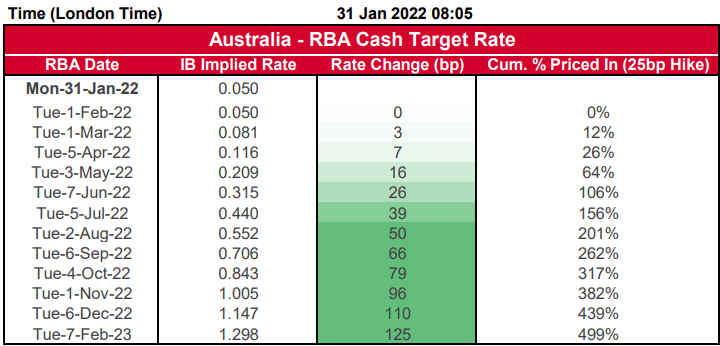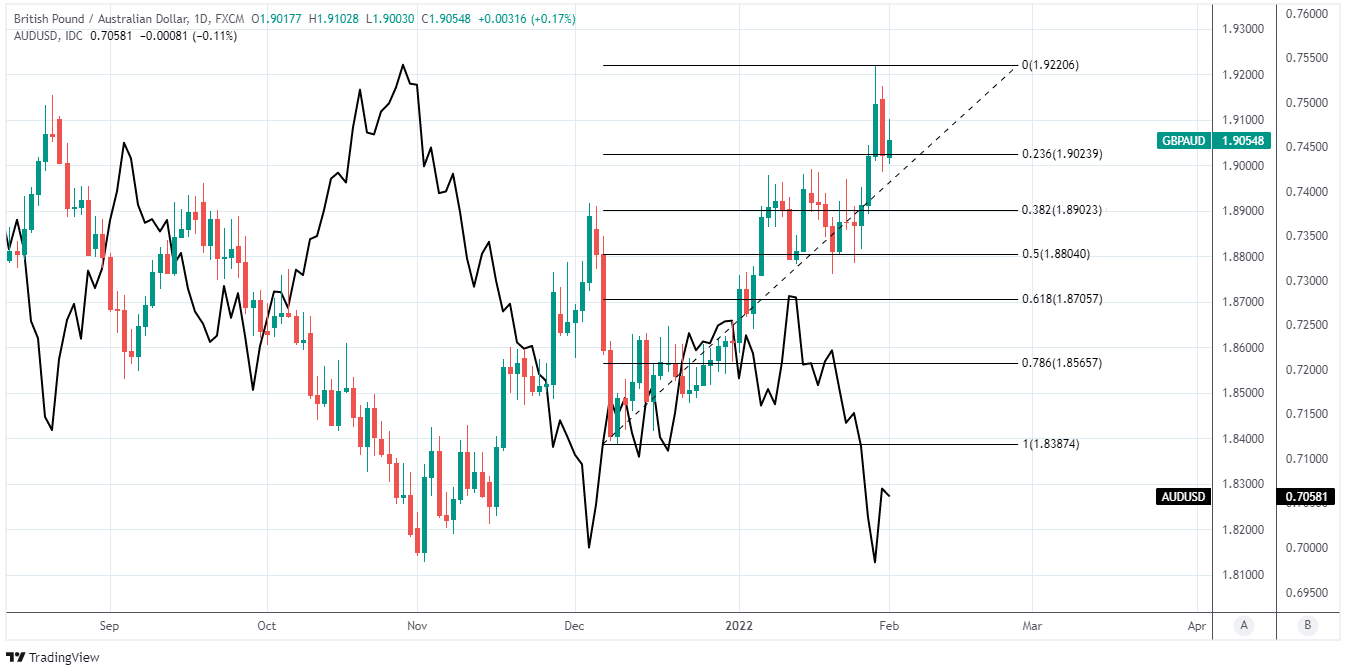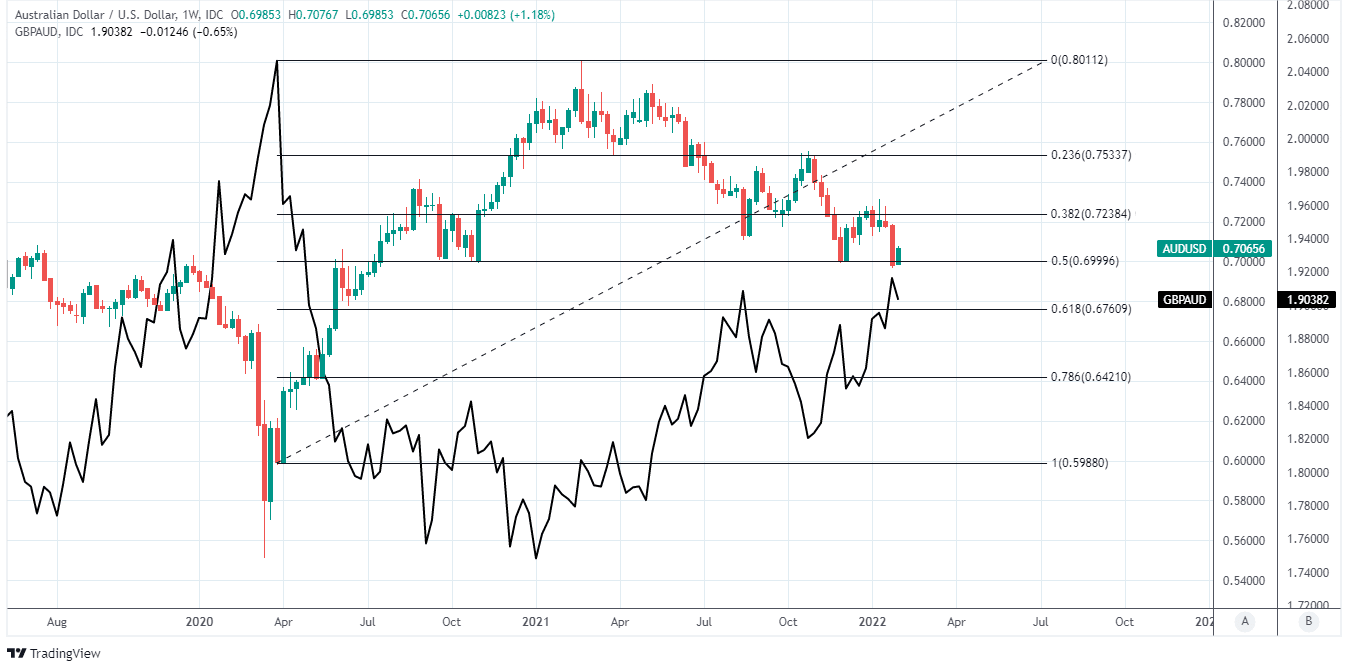Australian Dollar's RBA Handicap Could See GBP/AUD Hold Above 1.90
- Written by: James Skinner
-
- GBP/AUD could hold above 1.90 short-term
- After RBA leaves AUD/USD bereft of support
- RBA ends QE but quashes talk of a rate rise

Above: File image of RBA Governor Philip Lowe © Crawford Forum, Reproduced Under CC Licensing.
The Pound to Australian Dollar rate has risen back toward 18-month highs and could now be set hold above the recently-recovered 1.90 level after the Reserve Bank of Australia (RBA) effectively quashed market speculation suggesting that it would lift interest rates in the months ahead.
Australia’s Dollar slipped to the bottom of the major currency league table on Tuesday and helped to prevent GBP/AUD slipping back below 1.90 after the RBA said it intends to patiently observe growth in Aussie wage packets and other developments relating to inflation before lifting its interest rate.
"This was clearly not what markets were expecting to see. Indeed, the guidance that "while inflation has picked up, it is too early to conclude that it is sustainably within the target band" added to the sense of 'wait and see,” says Robert Rennie, head of financial market strategy at Westpac.
The RBA left its cash rate unchanged at 0.10% on Tuesday and said that its quantitative easing programme would end early and in its entirety on February 10, although both outcomes were already widely anticipated by a market that appeared to be jilted by the bank’s comments on inflation.
"An increase in the RBA’s cash rate as soon as May is off the table in our view (though is still partly priced),” says Joseph Capurso, head of international economics at Commonwealth Bank of Australia, writing in a Tuesday commentary.
Above: GBP/AUD shown at daily intervals with Fibonacci retracements of December recovery indicating possible areas of technical support for Sterling. Shown alongside AUD/USD rate.
- GBP/AUD reference rates at publication:
Spot: 1.9032 - High street bank rates (indicative band): 1.8366-1.8499
- Payment specialist rates (indicative band): 1.8860-1.8937
- Find out about specialist rates, here
- Set up an exchange rate alert, here
“In the US, markets are fully pricing the end of QE and the start of interest rate increases in March, a view we agree with. The bottom line is the RBA is dovish compared to the FOMC, and the differing outlooks for policy can weigh on AUD/USD a little in the near term,” Capurso and colleagues also said.
The RBA said on Tuesday that although wage growth has recently picked up, the increases seen so far have merely returned it to the rates of growth that prevailed before the pandemic, which were judged to be insufficient for sustaining the desired level of inflation in Australia.
It also said that although overall inflation has risen further than was expected in recent months, the bank still expects the annual pace of inflation to fall back to around 2.75% later this year and over the course of 2023.
“As the Board has stated previously, it will not increase the cash rate until actual inflation is sustainably within the 2 to 3 per cent target range. While inflation has picked up, it is too early to conclude that it is sustainably within the target band. There are uncertainties about how persistent the pick-up in inflation will be as supply-side problems are resolved,” the RBA explained in its concluding remarks.
Above: AUD/USD shown at weekly intervals with Fibonacci retracements of April 2020 recovery indicating possible areas of technical support for the Aussie. Shown along with GBP/AUD.
Secure a retail exchange rate that is between 3-5% stronger than offered by leading banks, learn more.
“Wages growth also remains modest and it is likely to be some time yet before aggregate wages growth is at a rate consistent with inflation being sustainably at target. The Board is prepared to be patient as it monitors how the various factors affecting inflation in Australia evolve,” it bank also said.
While the RBA’s forecasts and its language about inflation have shifted to suggest there’s an increasing chance of it beginning to lift Australian interest rates sooner than the late 2023 or early 2024 point implied by the bank’s earlier forecasts and remarks, Tuesday’s statement all but ruled out the idea of any increase in the cash rate being announced during the first half of this year.
The RBA’s patience with inflation and its implications for borrowing costs came as a disappointment to investors and traders in the overnight-indexed-swap market where prices had implied for some time that the bank would be almost certain to lift its benchmark cash rate by June.
“There is a strong risk that Governor Lowe will push back at market expectations of progressive rate hikes this year. Although this could leave AUD/USD on the back foot near-term, we see AUD/USD recovering to the 0.74 level towards the latter part of the year as policy tightening from the RBA moves more clearly into focus,’” says Jane Foley, head of FX strategy at Rabobank.

Above: Market implied expectations for RBA cash rate at each meeting over the next 12 months. Snapshot from January 31. Source: Westpac.
{wbamp-hide start}
{wbamp-hide end}{wbamp-show start}{wbamp-show end}
Interest rate market pricing has also implied a near-certain probability of multiple further increases that would take the RBA’s cash rate up to 1% or more before the end of this year, which leaves the Australian Dollar vulnerable to disappointment on Tuesday and throughout the rest of the week.
While the Australian Dollar was already in retreat on Tuesday in what was supportive price action for GBP/AUD, both could also be sensitive on Wednesday to remarks from RBA Governor Philip Lowe who’s set to appear at the National Press Club in Sydney around 01:30 London time.
“We think the RBA will get the confirmation it seems to want from wages with the publication of the Q2 Wage Price Index (WPI) in mid-August, paving the way for a September 2022 rate hike,” says David Plank, head of Australian economics at ANZ.
“With policy extremely stimulatory we think the RBA’s initial moves will be quite quick, especially when we consider that the effective cash rate will initially rise by less than the target. We see the cash rate at 0.75% by November 2022, rising to 2% by the end of 2023,” Plank and colleagues also say.
While economic data due out through the remainder of the year could yet change the RBA’s position, the immediate risk is that Governor Philip Lowe adds further to the Australian Dollar’s disappointment on Wednesday, which could help Sterling to sustain itself above the 1.90 level for a while yet.







